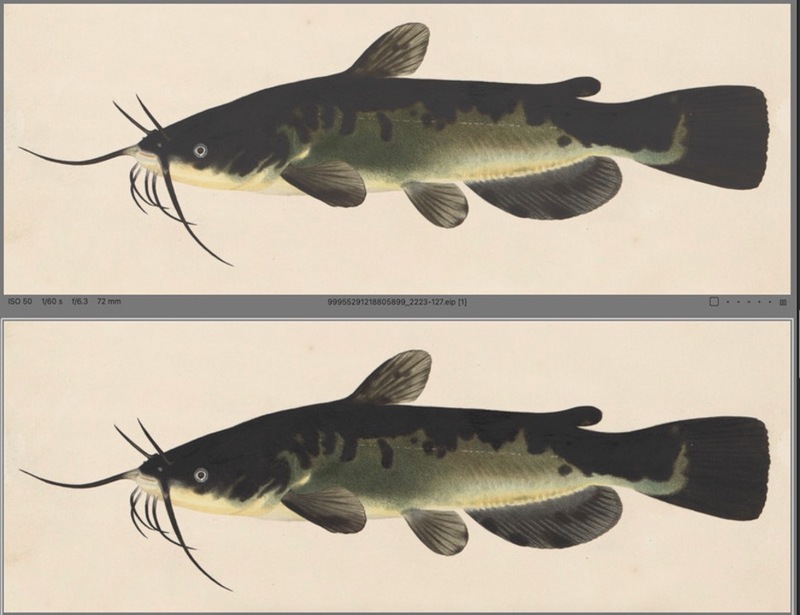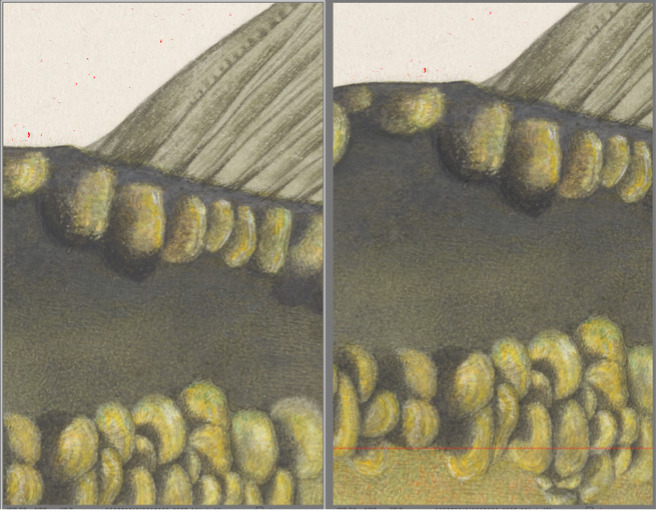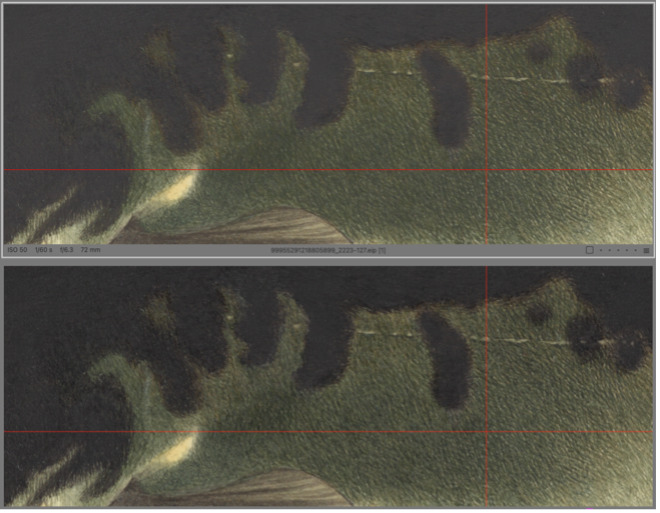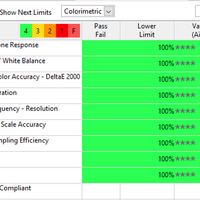FADGI Results
We are now able to verify our accuracy, whether stipulated in a grant we contribute to or to match our production to the output of vended services when needed. We can very closely, and with great nuance, monitor our equipment, our setups and our tools, and quickly respond when a measurement indicates change is needed.
Sometimes, though, even with 100% passing targets, the visual differences between an 85% passing target and 100% passing target are significant enough that we aesthetically choose the 85% target's qualities for our project. An example: for the digitization of Funk ACES Library's fish paintings collections Illustrations for The Fishes of Illinois: painting, 1892-1913 and Illinois State Laboratory of Natural History oil sketches of Illinois fishes: painting, 1878-1898, in the darkest darks, the 100% Fadgi 4-star rated files crushed the blacks and limited the texture visible in our images. We decided to expand those darkest darks and the results can be seen in the details below.
FADGI ratings are guidelines, not rules, and in the Cultural Heritage Digitization communities worldwide conversations can be heard about in what circumstances they should be followed exactly and when they should be bent. We have certainly embraced this approach and will make decisions that veer from the guidelines when we deem them reasonable or of benefit to the digital reproductions of the items we handle. There are many factors that change how the objects we digitize appear on the screen once reformatted, from care and handling to lighting considerations, and there is nuance that arises even with the most mathematically sound approaches.
FADGI 4-star compliant targets are not necessarily FADGI 4-star compliant digitized materials. Due to undulation of materials (such as the curve of an open book in near the gutter of the pages as they meet the spine), variation in focus is sometimes inevitable for our final objects (without focus stacking, something we rarely utilize for books, maps and papers which are the bulk of what we work with). This affects image quality and future use of the files, such as effective OCR (optical character recognition). There are also variations in the targets themselves, many are individually measured with a colorimeter but not all. There can be variation in how targets measure depending on their placement within the image frame as well. This FADGI practice of the targets measuring favorably according to the standards is not always translated directly to the objects we digitize, but it gives them a greater chance at being as good as we can make them.
Acknowledgements
A big thanks to Library IT for their support in keeping our equipment and workflows functioning – they make our work possible. Many thanks to Library Administration, among whose support included adding equipment during our COVID-19 pandemic response to support broader digital access to the collections (more on those efforts can be found here) has had a lasting impact. We continue using that equipment, now exclusively in support of Special Collections digitization efforts.
Thank you to collaborators within and outside the University of Illinois Library, with whom conversations abound with "ah ha" moments including helpful consultations with digitization experts at other institutions including Marijane Ceruti from Washington University Libraries; Ben Cort from Digital Transitions; Jerrell Jones from Rice University; and Dan Zellner from Northwestern University Libraries. We endeavor to learn more!
Thank you to our special collections at the library, who have been supportive throughout this adventure and provide rich materials that make learning inspired. A special thanks to our colleagues at University Archives (including the Horticulture Field Laboratory Archives Research Center) , Illinois History and Lincoln Collections (IHLC), Map Library, Rare Book and Manuscript Library (RBML) and Sousa Archives and Center For American Music. Finally, the vast communities and patrons the University Library serves are at the heart of what we do. Thank you!




